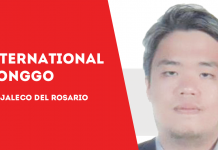
[av_textblock size=” font_color=” color=” av-desktop-hide=” av-medium-hide=” av-small-hide=” av-mini-hide=” av-medium-font-size=” av-small-font-size=” av-mini-font-size=”]
[/av_textblock]
[av_one_full first min_height=” vertical_alignment=” space=” custom_margin=” margin=’0px’ padding=’0px’ border=” border_color=” radius=’0px’ background_color=” src=” background_position=’top left’ background_repeat=’no-repeat’ animation=”]
[av_heading heading=’DREAM BIG ‘ tag=’h3′ style=’blockquote modern-quote’ size=” subheading_active=’subheading_below’ subheading_size=’15’ padding=’10’ color=” custom_font=” av-medium-font-size-title=” av-small-font-size-title=” av-mini-font-size-title=” av-medium-font-size=” av-small-font-size=” av-mini-font-size=” admin_preview_bg=”]
BY MANNY VILLAR
[/av_heading]
[av_textblock size=’18’ font_color=” color=” av-medium-font-size=” av-small-font-size=” av-mini-font-size=” admin_preview_bg=”]
ONE OF THE first challenges that President Rodrigo Roa Duterte’s economic team faced when they took office in 2016 was the government’s failure to spend as much as needed to develop the country’s infrastructure, which is a key to attracting investments.
We all know the controversies that hounded the department in the previous administration, but let’s leave it at that. During presentations before foreign and local business leaders, Department of Budget and Management (DBM) secretary Benjamin Diokno said past underinvestment in infrastructure explained why we have the poorest roads, bridges, urban transit systems, and railways in this part of the world.
The present poor state of infrastructure reflects decades of neglect and misallocation of public resources. We did not just find ourselves with horrendous traffic jams and cramped trains in a few years or so.
Citing DBM data, Diokno said infrastructure spending as share of Gross Domestic Product (GDP) averaged less than two percent from 1986 to 2016. According to multilateral institutions, the suggested ratio for infrastructure spending as a share of GDP is five percent for developing countries. The Philippines barely reached half of that threshold during the last 50 years.
This is the reason why the Duterte administration has identified infrastructure development as a priority. The Philippines has to close the infrastructure gap soon if we are to realize our development objectives of becoming an upper-middle income economy by 2022 and reducing poverty rate to 14 percent.
The administration plans to spend P8 trillion to P9 trillion, or approximately $160 billion to $180 billion in the next six years. For 2017, the government will spend P858 billion and under the proposed budget for 2018, the amount will increase to P1.1 trillion. As a share of GDP, infrastructure spending will be ramped up from 5.4 percent of the GDP in 2017 to 7.3 percent of GDP by 2022. The infrastructure program, dubbed “Build Build Build,” is easily the boldest infrastructure program in our recent history.
The first task for the DBM is to reduce underspending as a share of the cash budget. From P302 billion in 2014 (13.3 percent of the cash budget), government underspending went down to P96.3 billion (3.6 percent) in 2016 and P6 billion (0.4 percent) in the first half of 2016.
Allocating huge resources for infrastructure is only part of the solution to our serious lack of roads, bridges, ports and other infrastructure facilities. At the same time, the large budget presents opportunities for inefficiency and corruption.
Thus, the DBM instituted reforms to make sure that money is spent wisely, promptly and efficiently. For instance, the President vetoed an item in the 2017 budget that gives appropriations a validity of two years – the validity period has been cut to one year. According to Diokno, the two-year validity period in the past led to delays in the delivery of public services as bureaucrats became complacent with the two-year validity.
To ensure efficient implementation of infrastructure projects, the government will push for 24/7 construction. To promote transparency, the government will enforce stronger project monitoring through technology. This is already being done by the Department of Public Works and Highways (DPWH), which is utilizing drone technology.
For the swift and cost-effective rollout of projects, the government is adopting the hybrid PPP (Public-Private Partnership) approach. Under this approach, the government chooses the project, then arranges the financing through the budget, official development assistance or through foreign loans. Then the project is bid out to local or foreign contractors. After the completion of the project, the government bids out the operation and maintenance of the project to the private sector.
Diokno cites two reasons for adopting the hybrid PPP modality. First, it will make sure that the projects will be completed earlier. Second, the project will be more affordable as the government can borrow at lower cost and need not impute a return on public investment.
Studies show that under the traditional PPP approach, projects take 29 months from identification to ground-breaking, Diokno said. He stressed that the government could not afford such delays because the administration’s goal is to complete all projects, with few exceptions, during the term of President Duterte.
On the second reason, the government can borrow at a much lower rate and for far longer period. For example, for the Metro Subway Project, we can borrow at 0.1%, payable for 40 years, inclusive of the grace period.
What I just discussed was based on presentations, as I said earlier, before business leaders, including those in China, Singapore, Japan and the United States.
The nature of my business takes me around the country, and I continue to see the numerous infrastructure projects being undertaken in many places far from Metro Manila.
The point I want to make is that President Duterte and his economic team are really serious about achieving the goal they set out to do. This, in turn, leads to another point: The President is sincere and determined to deliver on his promise – to improve the lives of Filipinos.
***
This piece first came out in Business Mirror on Dec. 4, 2017 under the column “The Entrepreneur.” For comments/feedback e-mail to: mbv.secretariat@gmail.com or visitwww.mannyvillar.com.ph./PN
[/av_textblock]
[/av_one_full]







